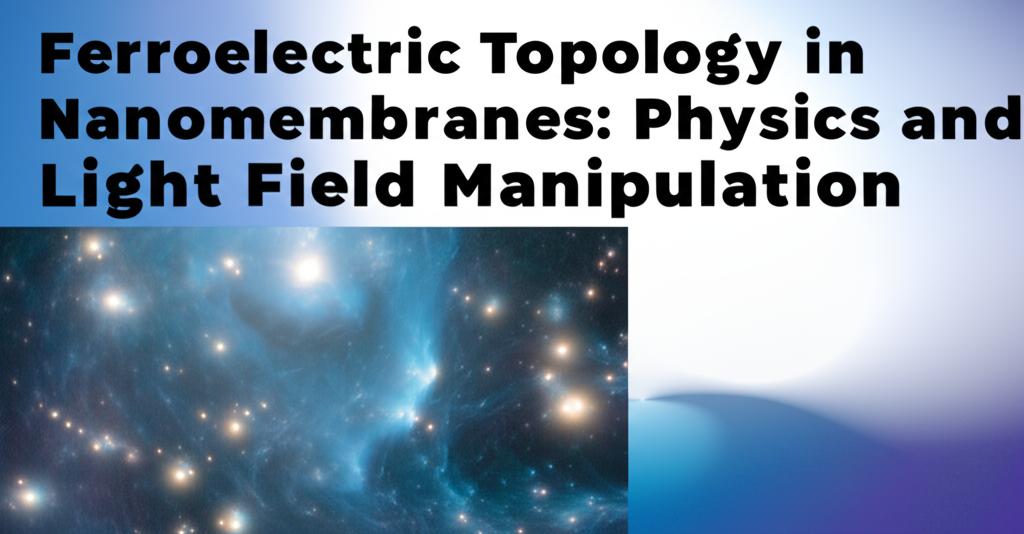Ferroelectric materials possess spontaneous electric polarization, meaning they have a separation of positive and negative electric charges that can be flipped by an external electric field. The arrangement of these electric dipoles (pairs of opposite charges) can form intricate patterns known as topological textures. Recently, scientists have made exciting progress in creating and understanding these ferroelectric topologies within ultra-thin materials called nanomembranes, and this is opening up new possibilities for controlling light.
A key challenge in using ferroelectric topological textures for manipulating light has been the significant size difference between these nanoscale dipole patterns and the much larger laser beams typically used. However, new research published in Nature Nanotechnology in April 2025 demonstrates a breakthrough in this area. Scientists have successfully created dome-shaped ferroelectric topologies in freestanding barium titanate (BaTiO₃) nanomembranes with lateral dimensions on the micrometer scale. This larger size makes them much more compatible with optical applications.
This novel dome-shaped topology is achieved through a radial flexoelectric field generated by anisotropic lattice distortion in the nanomembrane. This, in turn, creates center-convergent microdomains where the electric dipoles continuously curl. This specific dipole arrangement is crucial for light manipulation.
The interaction between this continuous curling of dipoles and incoming light leads to a fascinating phenomenon: the conversion of circularly polarized light into vortex light fields. This happens through a nonlinear process called spin-to-orbit angular momentum conversion. Vortex beams are light beams that have a helical wavefront and carry orbital angular momentum, making them useful for a variety of applications, including optical trapping, high-resolution microscopy, and quantum information processing.
Furthermore, these ferroelectric dome topologies offer dynamic control over the generated vortex light. Researchers have shown that the polar topology can be switched using thermal and electrical stimuli, allowing for real-time manipulation of the vortex light fields.
This work highlights the significant potential of ferroelectric polar topologies in nanomembranes for advanced light field manipulation. It paves the way for developing new types of optical devices. The ability to create and control these intricate dipole structures in thin, flexible materials is a significant step forward.
Ongoing research in this field is also exploring how to manipulate ferroelectric topological polar structures using "twisted light" – light that itself carries orbital angular momentum. Studies are using techniques like in-situ X-ray Bragg coherent diffractive imaging and twisted optical Raman spectroscopy to understand how twisted UV light can dynamically modulate ferroelectric polarization. These investigations aim to achieve deterministic and reversible control over the material's properties, potentially leading to ultrafast non-volatile memory switches and other novel optoelectronic devices.
The advancements in fabricating and characterizing freestanding ferroelectric films are crucial for these applications. Techniques like van der Waals epitaxy are enabling the creation of flexible and even transparent ferroelectric devices, expanding their potential uses in areas like transparent electronics, sensors, and actuators. The thickness of these films is a critical parameter, with researchers successfully creating ultrathin nanomembranes that retain their ferroelectric properties.
In summary, the study of ferroelectric topology in nanomembranes is a rapidly evolving field. The physics of these exotic dipole configurations and their interaction with light are leading to innovative ways to manipulate light at the micro and nanoscale, promising exciting new technologies for a wide range of optical and electronic applications.

